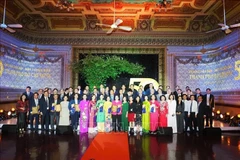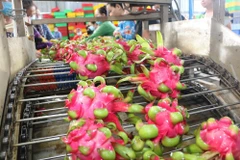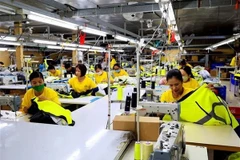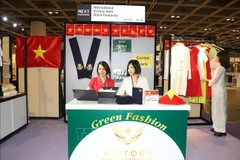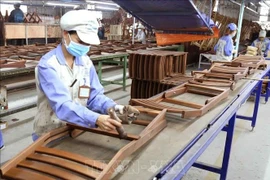This year, the group is working towards a rise of 12 percent in totalrevenue, of which 30 percent will be contributed by domestic sales.
Tran Viet, head of the marketing department ofVinatex, said the local garment market is promising as domesticconsumption for clothing and fashion accessories only ranked after foodand foodstuff.
In the first six months of thisyear, the group’s domestic revenue is estimated at 11 trillion VND (517million USD), a year-on-year increase of 10 percent.
According to the group’s statistics, each Vietnamese consumer spendsbetween 150,000 VND and 500,000 VND (7-24 USD) on clothes and fashionaccessories every month, accounting for 18 percent of his or her monthlyconsumption.
Vinatex General Director Le TienTruong said that to seek a firm foothold in the local market, garmentcompanies have to enhance their localisation ratio to 60 percent by2015.
To that end, the group has increasedinvestment in upgrading technology in order to increase production andrenew designs.
Than Duc Viet, Deputy GeneralDirector of Garment 10 – a Vinatex subsidiary, said that his company haspaid attention to technology investment and cut production costs tosupply domestic products at competitive prices.
Expanding the distribution network is also one of the solutions toensure Vinatex products get closer to local consumers. The group now hasmore than 4,000 shops in the country. However, Truong said domesticproducts have sought a firm foothold in medium and high-end segmentsonly, while locally-made products are not capable of competing withcheap imported ones.
Phan Chi Dung, Director ofLight Industry Department under the Ministry of Industry and Trade, saidVietnamese garment companies need to make more efforts to compete withimported ones on home turf, while paying more attention to developingthe retail network across the country.
Garmentcompanies need to work out policies to further invest in designing andapplying new technology to produce high-quality and specialisedproducts, he added.-VNA


